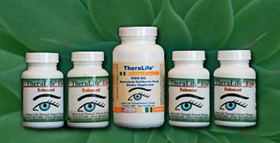Risk Factor for the Developing Dry Eye Syndrome
We all know the discomfort and often how life changing chronic dry eye syndromes can be.You tried everything, drops, punctal plugs, prescription eye drops, nothing seems to help. Let's see if you have these risk factors that causes dry eyes.
1. Women in maturity:
Menopause women who receive hormone replacement therapy are at higher risk. Post menopausal women who use hormone replacement, especially estrogen, have a higher prevalence of dry eye syndrome compared with those who have never used hormone replacement therapy. In general both menopausal and post menopausal women tend to have dry eye symptoms; this is because hormone balance is important in tear production.2. Arthritis and smoking
3. Medications -
Medications such as diuretics (to lower high blood pressure) , antidepressants, antihistamines, anticholinergics, and systemic retinoids like Accutane can increase the risk of developing dry eye syndrome4. Environmental factors,
Such as reduced humidity and increased wind, drafts, air conditioning, or heating may worsen the ocular discomfort of patients with dry eye. Exogenous irritants and allergens, although not believed to be causative of dry eye, can certainly increase the symptoms of dry eyes in people, as can extended visual tasking during computer use, television watching, and prolonged reading.5. LASIK or PRK Surgery:
Following refractive surgery such as laser-assisted in situ keratomileusis (LASIK) or photorefractive keratectomy (PRK), patients for several months may experience significant dry eye due to the severing of the corneal nerves during surgery.6. Systemic Diseases:
Sjogrens, Blepharitis, Lymphoma, Viral Infections, AIDS …
Dry eye-associated systemic diseases include Sjögren's syndrome, where inflammation of the lacrimal gland leads to tear-production deficiency, and rosacea, which is associated with posterior blepharitis with increased tear evaporation. Aqueous tear deficiency may develop in systemic pathologies such as lymphoma, sarcoidosis, hemochromatosis, and amyloidosis. Dry eye may likewise develop in patients with systemic viral infections and AIDS. Lacrimal gland swelling, dry eye, and Sjögren’s syndrome have been associated with Epstein-Barr virus infections15 and decreased tear production, reduced tear volume, and reduced tear lactoferrin concentrations have been seen in patients with hepatitis C. Neuromuscular disorders that affect the patient’s blink (e.g., Parkinson disease, Bell palsy) can lead to dry eye syndrome as can localized findings such as eyelid malposition, lagophthalmos, and blepharitis.7. Cancer Treatments
Radiation, Transplantation, localized trauma, including orbital surgery, radiation, and injury, may also cause dry eye.You can see from all the research into the risk factors of dry eye disease that we need to go beyond just dispensing some artificial tear to people with dry eyes. Lifestyle can have a major impact in underlying issues our patients may have. It is the first step to insure success in DED treatment.
Excerts from Optometric Management – Jan 2011 Issue by Dr Ernest Bowling OD and Gregg Russell OD
How can TheraLife Help?
TheraLife has a spectrum of products that deal with these dry eye disorders including:
- TheraLife Eye – for chronic dry eye: Web link
- TheraLife Menopausal Support – for hormone balance: Web link
- TheraLife Autoimmune Dry Eye formula – for Sjogren’s and more: Web link
- TheraLife Omega 3 Fish Oil – to increase dry eye relief when used in combination with TheraLife Eye and TheraLife Autoimmune. click here
- TheraLife MaculaEye: click here
Call and talk to a doctor toll free 1-877-917-1989
International (650) 949-6080
Send inquiries to: info@theralife.com
Follow us at twitter.com/theralife
and facebook

















